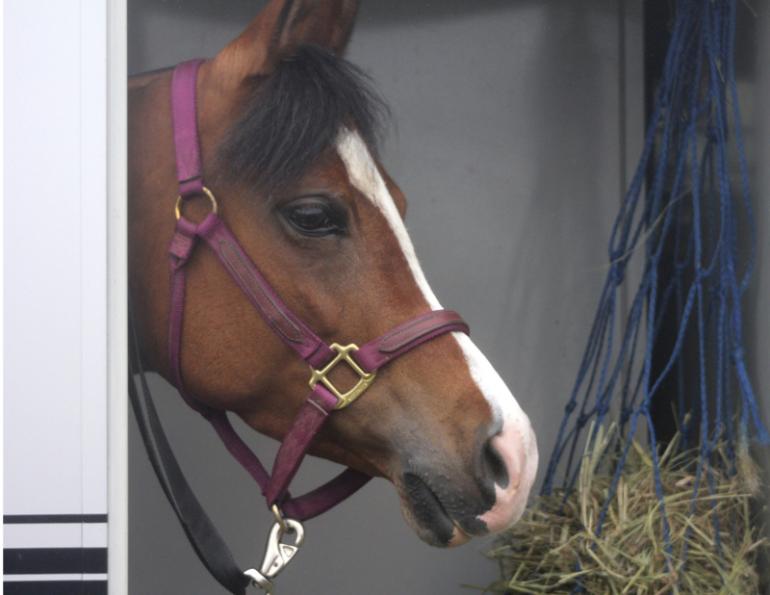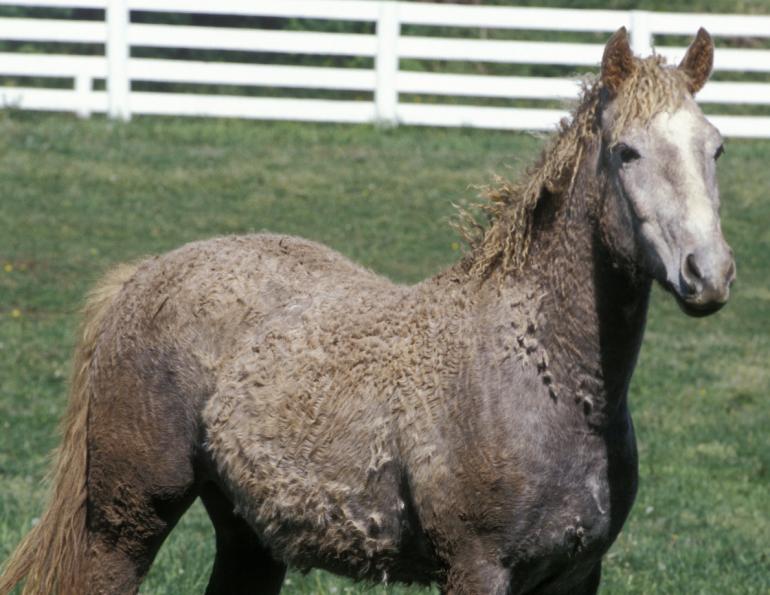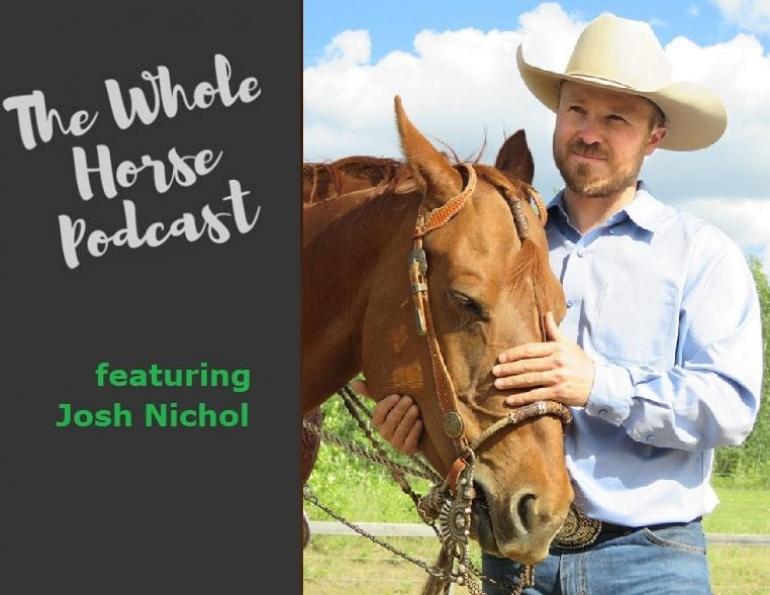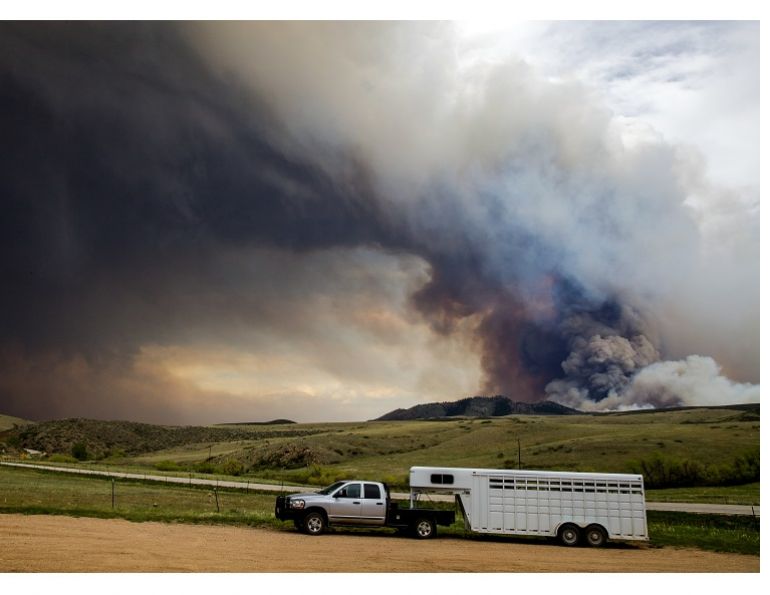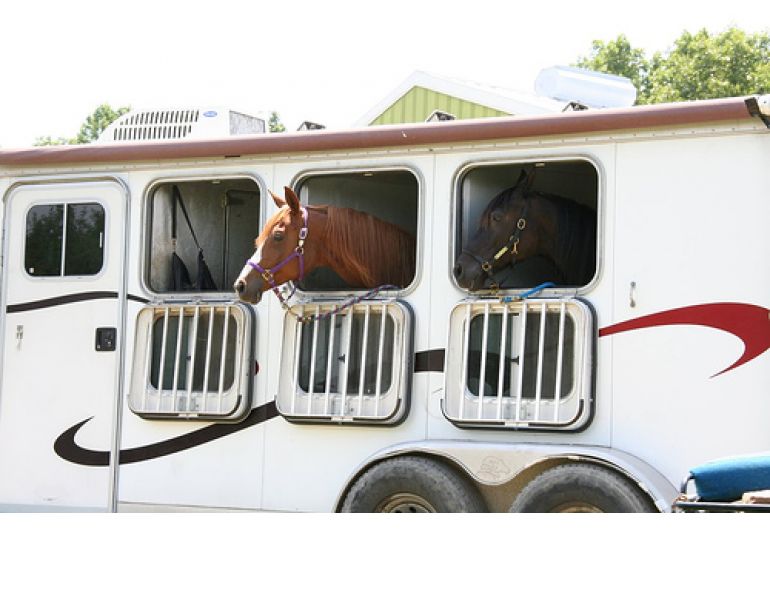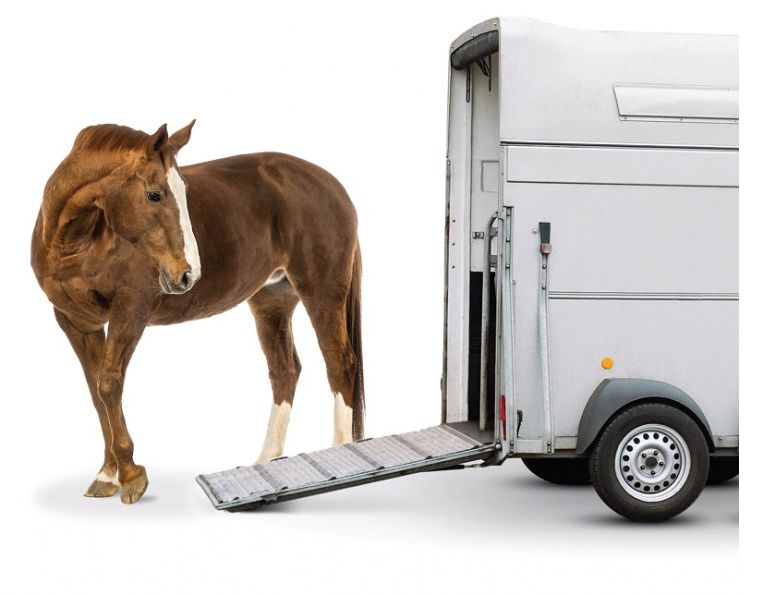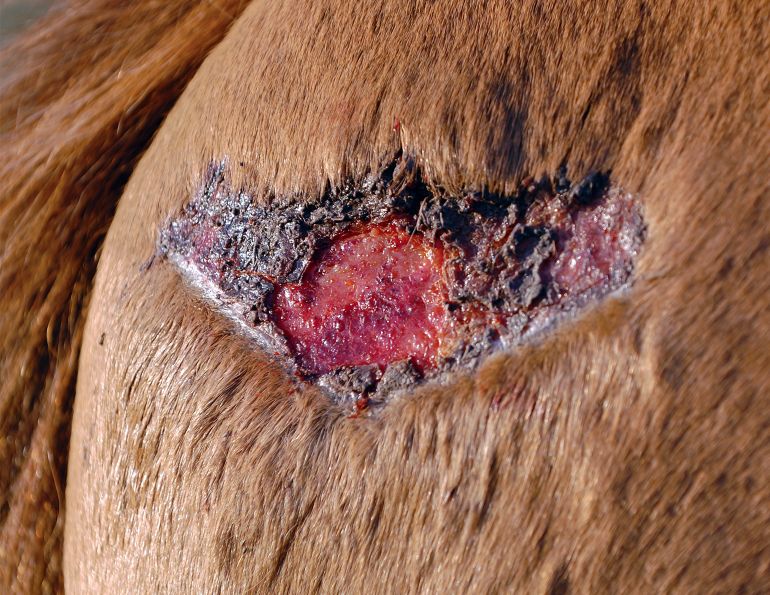Contributed by Washington State University
Several types of fractures and injuries that doomed a horse in the past may be repaired today due to advances in veterinary medicine and surgery. One of the most important factors for a successful outcome from such an incident is what happens before a horse arrives at a veterinary medical center for treatment. This includes applying appropriate first aid and stabilizing the limb properly if needed.
“What happens from the time a fracture is recognized to the time the horse arrives at the referral center is often as critical, or more critical, than what happens during the surgical procedure for fracture repair,” said. Dr. Kelly Farnsworth, a board-certified equine surgeon at the Washington State University (WSU) College of Veterinary Medicine.
“I would discourage owners to try to do something alone unless they have a good understanding of the anatomy and the dynamic changes in forces that occur when the limb is fractured,” said Dr. Stavros Yiannikouris, a WSU equine surgical resident with interest in orthopedic sports surgery and performance.
Signs of a fracture include sudden lameness, severe pain, swelling in the affected area, and a refusal to place weight on the affected limb. Horse owners need to address an injury immediately once it is recognized. Ideally, they should keep the horse quiet to minimize additional tissue damage from the fracture, and contact their veterinarian or have someone else place the call. The horse should not be walked unless absolutely necessary. Walking on an unstable limb can cause additional damage to the leg. Care should be taken to the location of the horse unless the situation dictates that it is unsafe for the horse or those handling the horse to remain where they are.
“It is critical to protect the soft tissues that cover the bone so that the sharp ends don’t further damage the soft tissue, nerves, and blood vessels in that area until we have a chance to repair the fracture,” Dr. Farnsworth said. “A veterinarian can help with this critical first aid. If the fracture is open, meaning the bone has penetrated through the skin, our chances for successful repair decreases dramatically. And while success is still possible, extreme care should be taken to prevent this from happening.
“Once supportive first aid is applied, most horses should be transported to a hospital where quality radiographs or other advanced diagnostic modalities can be used to determine exactly the degree of damage,” Dr. Yiannikouris said. “A veterinarian should evaluate the horse before any plans are made for transportation. If a horse is not properly prepared for travel, the fracture can displace further and penetrate through the skin, which may affect the overall outcome significantly.”
Once a veterinarian has stabilized the broken leg, the horse can then be moved or transported. Ideally the trailer should be moved as close to the horse as possible, to reduce the distance the horse has to walk. If a horse falls while being loaded onto a trailer or on the way to the hospital, try to calm the animal and slowly help it up if possible.
Ideally foreleg fractures should be transported with the horse facing reward, and rear limb fractures with the horse facing forward. This way if the driver is forced to brake suddenly, the weight of the horse is not thrown onto the fractured limb. It is best to use a trailer that confines the animal and provides support on all four sides, rather than an open stock trailer. This allows the horse to lean against the walls and not be thrown around in the trailer.
Horses with fractured limbs will not lie down in an open trailer. A large horse trailer is more stable than a small trailer, but if used, the horse should be confined to an individual stall within that trailer.
Contemporary Treatments and Recovery
There are several types of fractures that horses can survive with proper medical or surgical treatments. While the type of fracture plays a large role, the size and temperament of a horse are other factors that can determine success or failure.
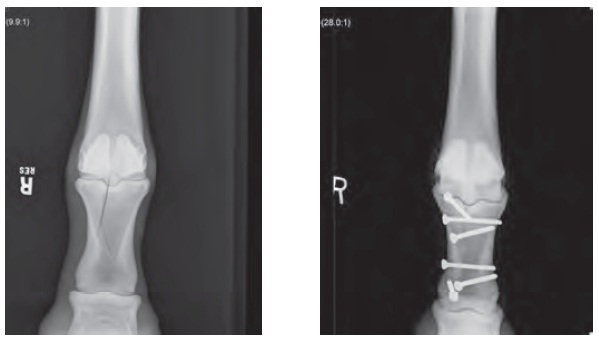
Radiographs showing the fracture of a horse’s P1 bone before and after repair at WSU’s Veterinary Teaching Hospital. Images courtesy of WSU’s Veterinary Teaching Hospital.
“As far as other factors, skin lacerations or open fractures decrease the prognosis significantly due to infection,” said Dr. Farnsworth. “Other detrimental factors include uncontrollable bleeding or any compromise in blood supply to the limb below the fracture.”
“In general, fractures below the carpus (knee) or hock can be managed in most horses,” Dr. Yiannikouris said. “In addition, olecranon (point of the elbow) fractures are usually easy to manage and have a favorable outcome. For fractures higher than that, usually weight is the limiting factor. Surgical repair of fractures in horses weighing more than 600 pounds can be difficult, in some cases impossible. High quality radiographs are critical before making any permanent decisions. Some humeral (shoulder) fractures, scapular fractures, femur fractures, and pelvic fractures can be managed with strict stall confinement with a successful outcome.
For most horses, surgical repair of the fracture offers the best prognosis for survival and return to soundness. Horses that come to WSU’s Veterinary Teaching Hospital for treatment have thorough diagnostic testing done before surgery is ruled an option. They are imaged with digital radiographs, and some with computer tomography or magnetic resonance imaging if needed, so veterinary surgeons know the exact configuration of the fracture and can make proper surgical planning.
“Horses with fractures that require internal fixation are put under general anesthesia, and depending on the fracture, may have as little as one screw placed or may have multiple plates and a multitude of screws put in to reconstruct the anatomic configuration,” Dr. Farnsworth said. Most also have casts placed on them for additional protection.
“Following surgery, horses with fracture repairs may be recovered in our recovery pool depending on the duration of surgery and fracture type,” he said. “This is a huge step forward in treating fractures because one of the most critical times for a fracture repair is the immediate post-operative period.”
Generally, a horse is disoriented when coming out of anesthesia. But the pool allows the animal to regain its senses and balance, decreasing the possibility of injuries from a stumble or fall. When ready, the pool floor is brought up under the horse, allowing it to walk to a stall right out of the pool.
After surgery, a fractured horse has to stay at the hospital for a period of time, especially if a cast is on. Once the cast is removed and the horse is using its leg, it can go home, but must follow a rehabilitation plan that usually lasts between three to six months, and in some cases, up to a year. A rehabilitation program may include initial stall rest, with a gradual increase in walking and physical therapy for the leg to regain its range of motion.
“Once a fracture occurs, or even if horse owners aren’t sure, we welcome them or their veterinarians to call us immediately at the veterinary hospital to get a consultation and to figure out the best course of action,” Dr. Farnsworth said. “With the modern treatments and surgical procedures we have today, we are able to save a large number of horses and return them to athletic function, while others are able to be comfortably used as brood mares or for lower-level athletic activities. It does have a significant financial and emotional commitment, but the results can be very positive.”
This article originally appeared in the Fall 2009 issue of Equine News, and is reprinted with kind permission from Washington State University’s College of Veterinary Medicine.
The Equine Group at Washington State University’s College of Veterinary Medicine is a team of professionals devoted to providing exceptional veterinary care for horses in the Pacific Northwest. Particularly well recognized for their advances in lameness diagnosis, techniques for surgical intervention, assessment of neurologic conditions, and understanding of infectious diseases, the Equine Group’s combined efforts in clinical service, teaching, and research have made them national and international leaders in equine medicine and surgery. For more information, visit www.vetmed.wsu.edu/depts-vth/equine.
Main article photo: Photos.com/Robert Hud



